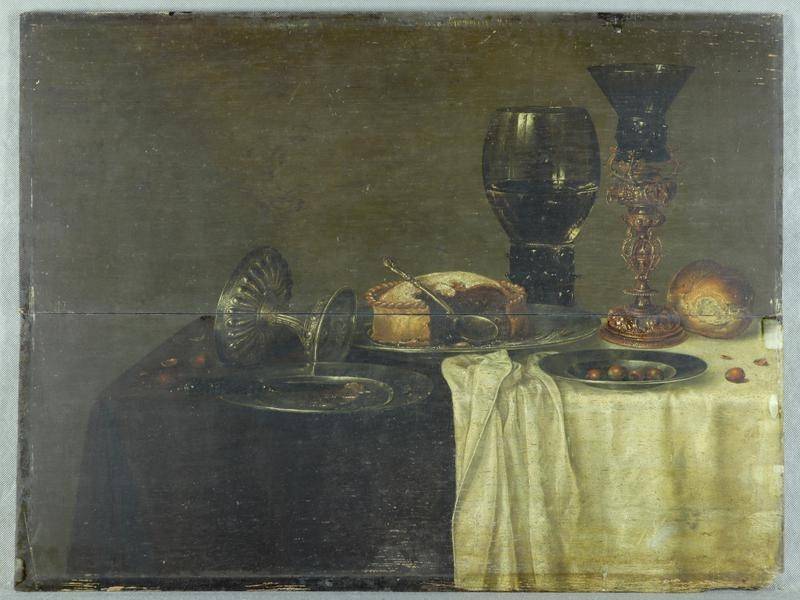Workers came across the oil-painting during a restoration project and was one among over 60,000 pieces of artwork amassed by the trust. Conservators say the artwork was created by Gerrit Willemz Heda, son of 17th century painter Willem Claesz Heda, but haven’t ruled out that the painting was a collaboration between the two.
Titled “Still life”, the artwork depicts a messy table after a feast with a cup fallen over, a half-draped table cloth and several plates of left over food. If found to be worked on by Willem Claesz, the painting could fetch up to $5 million experts say.
National Trust Collections Manager Rebecca Pinchin said that the find was overwhelming.
“To find an authentic 17th century painting in my storeroom at the National Trust was beyond exciting – it left me breathless,” she said.
“To find the signature of the artist felt like a one in a million chance.
“This is a remarkable story of discovery, which has taken us on a journey across a number of years, piecing together and validating the work through expert advice and technology.”

James Fairfax was the founder of the Sydney Morning Herald, and his nephew Alfred brought the building, where the painting was found, in 1868. Coincidentally, the find marks 80 years of official diplomatic relations between Australia and the Netherlands.
Willem Claesz Heda paintings have sold for more than $8 million at auction, before the signature was found “Still life” was valued at only $200,000.
People can go see the famed painting at an exhibition for the Australian Heritage Festival in Woodford, NSW in May.






